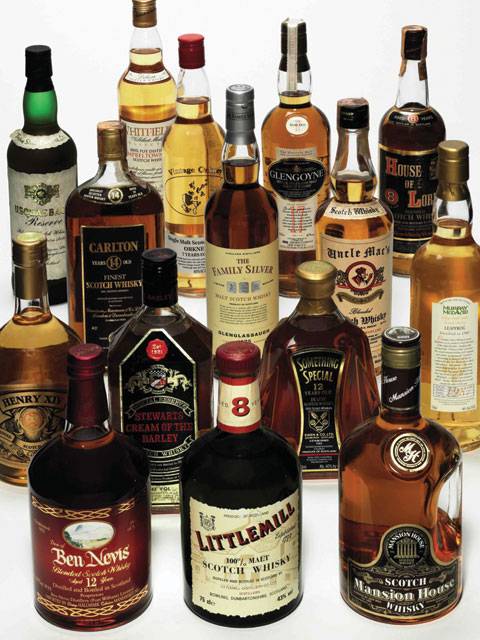With sturgeon fishing in the Caspian Sea under tight regulations due to the astounding decline of the species, American distributors are looking to new sources to keep the caviar dreams alive.
By Stephanie Wilson
“Caviar should be round, and hard, and of adequate size, and should burst in your mouth at precisely the right moment.”
Within the last century, caviar has become synonymous with luxury and wealth, a characterization that has evolved from the time when it was so plentiful that it was given away like peanuts at American bars. But as the popularity of caviar increased, the population of the sturgeon fish decreased, and, governed by the rules of
supply and demand, prices skyrocketed, further enhancing the appeal among the upper levels of society.
Contemporary black caviar is roe from sturgeon fished from the Caspian Sea by Azerbaijan, Iran, Russia, and Kazakhstan. The most coveted, and therefore most expensive, types are the beluga, ossetra, and sevruga varieties. Ossetra caviar comes from the ossetra sturgeon, which, though slightly smaller than the beluga sturgeon, can weigh up to 400 pounds and live up to 50 years. Ossetra, which has a firmer texture than beluga, boasts a unique, nutty flavor that enhances its status as an elite caviar. Sevruga, also a coveted type, has markedly smaller eggs. But over-fishing has led to a dramatic decrease in sturgeon yields from the Caspian Sea, forcing CITES, the U.N.-sponsored conservation body, to place restrictions on commercial fisherman and exports of certain types of caviar, leading to a dramatic increase in the black market of what is commonly referred to as “black gold,” as poachers search the waters for the giant fish in order to meet the ever present demand.
Early in 2007, the exporting ban on ossetra and sevruga caviar was lifted, although a complete ban on the export of any type of beluga caviar, the most expensive type, remains. The restrictions have resulted in the creation of less costly, though popular, caviar-quality roe alternatives from the whitefish and the North Atlantic salmon. But, just like a knock-off Gucci bag, imitation is never satisfactory.
As Goldie Hawn’s character Joanna Stayton says in the 1987 classic Overboard, “Caviar should be round, and hard, and of adequate size, and should burst in your mouth at precisely the right moment,” and while alternative caviars may be adequate, they cannot compare to the original sturgeon variety. Marky’s, one of the country’s leading caviar merchants, agrees. Thus, Mark Zaslavsky and Mark Gelman, co-owners of the wholesale fine food distributor that specializes in caviar, foie gras, and truffles, hope to actually produce the first American-grown beluga sturgeon and caviar, through their company, Sturgeon Aquafarms, LLC. Sturgeon Aquafarms is dedicated to restoring the world’s resources of sturgeon. In 2004, the company received 13 shipments of live sturgeon from the Caspian Sea. Moshe Cohen, sales director at Marky’s, explains, “These are not the cousin of the sturgeon, these are actual sturgeon fish that were caught from the Caspian and brought to the U.S.” Today, the company has more than 1,000 sevruga, 30 of which are sexually mature. The company also has 10 adult Russian and 70 adult beluga sturgeons. The fish are being farm-raised outside of Orlando in 26 tanks on a 1,700-acre farm. And thanks to the warmer Florida climate, the fish, which take 20 years to reach maturity in the Caspian Sea, are growing faster, and Marky’s expects to release the first American-grown beluga caviar within the next few years. Eventually, they expect to harvest some 10 tons of caviar annually from the farm, allowing supply to inch ever closer to demand.
In the meantime, caviar aficionados do not have to go without entirely, but any beluga found on the shelves at gourmet markets is either old (importing bans have been in place for years) or not beluga at all (Marky’s goes so far as DNA testing every shipment they receive to guarantee they are not fraudulent, a common occurrence in the caviar marketplace). And while exportation of ossetra and sevruga is also under tight restrictions by CITES, restrictions were lessened in 2007, thanks in part to companies like Marky’s, which injects 1,000 baby fish back into the sea with every catch, in order to ensure the future population of the sturgeon.
But Cohen explains that, even with the decline in the sturgeon species, there are still some decidedly fine American caviars that are available. He cites paddlefish as a favorite, and credits Marky’s processing standards for the appeal of the caviar (roughly $20 an ounce), which allow the “lesser” roe to achieve high quality. “We process the roe from the paddlefish just as we do from the sturgeon,” he explains. This involves cleaning the eggs as little as possible in order to keep the taste in tact, followed by an intricate filtering process. And while other caviar processors are known to over-salt their caviars, increasing the weight of the eggs without using actual eggs, Marky’s uses a limited salting process.
Whichever of the caviars one chooses, Cohen explains, “There are two schools of thought on how to enjoy caviar: the Russian way, which involves a bilini and crème fraîche, washed down with vodka; and the French way, which involves toast and a dry champagne.” He notes that anyone who serves their caviar with onions or hardboiled eggs is simply looking to mask the flavor of a lesser caviar. But regardless of how one chooses to enjoy it, thanks to the efforts of Marky’s, future generations will be able to have caviar dreams as well.





















